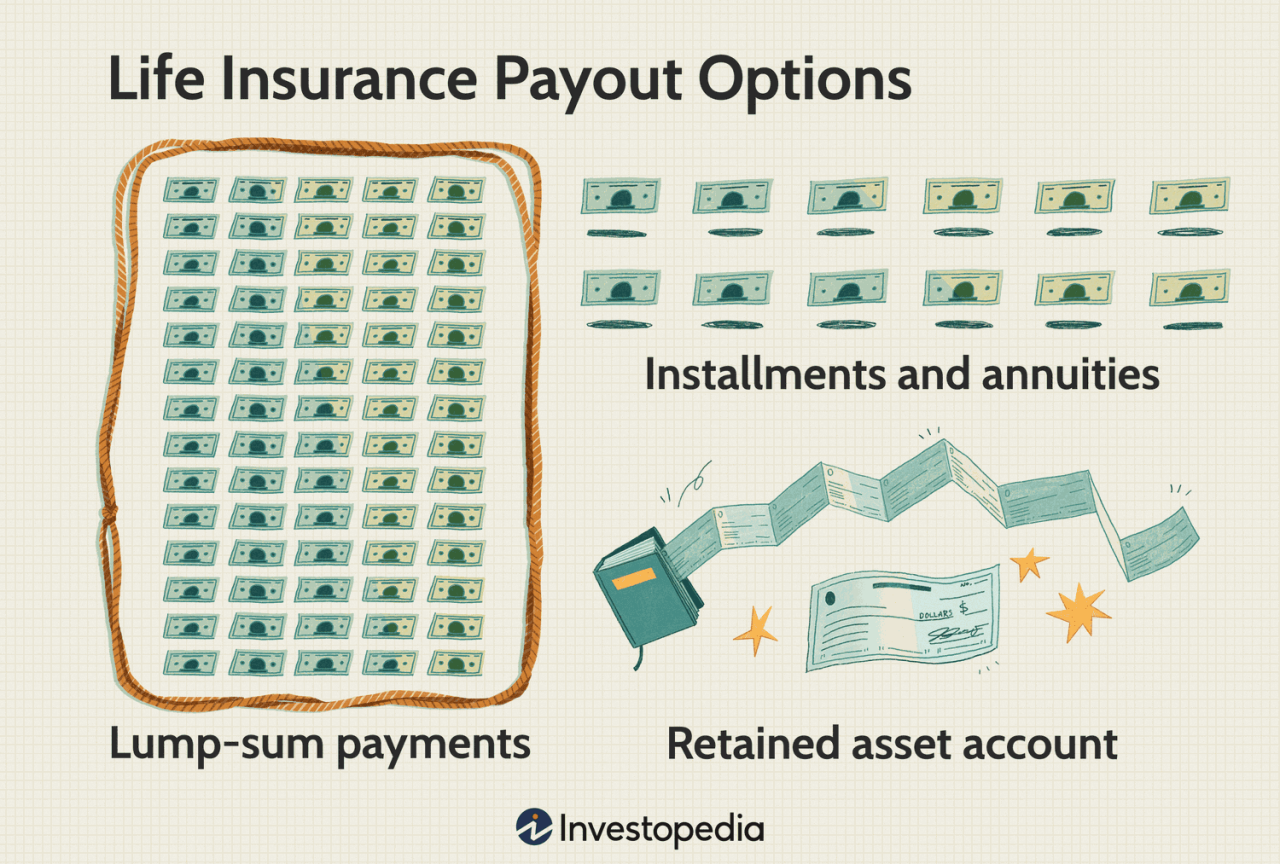Burial Insurance Income Protection Insurance A Comprehensive Guide
Burial insurance and income protection insurance, while distinct, often intersect in providing crucial financial security. Understanding their differences, costs, and benefits is vital for effective financial planning. This guide explores both individually and collectively, offering insights into their roles in securing your family’s future against unexpected life events. We’ll delve into the specifics of each insurance type, comparing coverage, costs, and claim processes. We’ll also examine how these seemingly disparate insurance policies can work together to create a robust financial safety net, mitigating risks associated with death and loss of income. The goal is to equip readers with the knowledge necessary to make informed decisions about their financial well-being. Defining Burial Insurance and Income Protection Insurance Burial insurance and income protection insurance, while both falling under the umbrella of life insurance, serve vastly different purposes and cater to distinct needs. Understanding their core differences is crucial for individuals seeking appropriate financial protection. This section will clarify the key distinctions between these two important insurance products, outlining their coverage and target demographics. Burial Insurance Coverage Burial insurance, also known as final expense insurance, is a specific type of life insurance designed to cover the costs associated with a person’s death. This typically includes funeral expenses, burial plots, cremation costs, and other related administrative fees. The policy pays out a predetermined death benefit, usually a relatively small sum, directly to the beneficiary to cover these final expenses. The simplicity of the policy and its straightforward purpose make it an attractive option for individuals seeking a cost-effective solution to alleviate the financial burden on their loved ones during a difficult time. Premiums are generally fixed and affordable, making it accessible to a wider range of individuals. Income Protection Insurance Coverage Income protection insurance, conversely, is designed to replace a portion of an individual’s income if they become unable to work due to illness or injury. This type of insurance provides a regular monthly payment for a specified period, often until retirement age or until the insured person recovers and returns to work. The amount of coverage is typically based on a percentage of the insured’s income, and the policy will often include a waiting period before payments begin. Unlike burial insurance, which pays a lump sum upon death, income protection insurance provides ongoing financial support during a period of disability. This protection is crucial for maintaining financial stability and covering essential living expenses when income is interrupted. Target Demographics: Burial Insurance Burial insurance primarily targets individuals who are concerned about leaving their families with the financial burden of funeral arrangements. This demographic often includes older adults, those on fixed incomes, or individuals with limited financial resources. The affordability and straightforward nature of the policy make it a suitable choice for those prioritizing the coverage of end-of-life expenses above other financial planning aspects. For example, a retiree on a pension might find burial insurance a valuable tool to ensure their final expenses are covered without placing a strain on their family’s finances. Target Demographics: Income Protection Insurance Income protection insurance, on the other hand, typically appeals to working-age adults who want to safeguard their financial stability in the event of long-term illness or injury. This demographic often includes individuals with mortgages, families to support, or significant financial commitments. The policy provides a safety net, allowing them to maintain their lifestyle and meet their financial obligations even when their income is significantly reduced or eliminated. A young professional with a family and a mortgage, for instance, might prioritize income protection insurance to protect their family’s financial security in the event of a debilitating illness or accident. Cost Comparison Choosing between burial insurance and income protection insurance often hinges on a careful assessment of costs and individual needs. Both offer crucial financial safeguards, but their pricing structures and influencing factors differ significantly. Understanding these differences is vital for making an informed decision. The average cost of each insurance type varies considerably depending on several factors. Burial insurance, also known as final expense insurance, typically offers simpler, more straightforward pricing. Income protection insurance, however, presents a more complex cost landscape influenced by numerous variables. A direct comparison reveals interesting insights into the financial implications of each choice. Burial Insurance Costs Burial insurance premiums are generally lower than income protection insurance premiums. The cost is primarily determined by the death benefit chosen, the age of the insured, and the health status of the applicant. Older applicants or those with pre-existing health conditions will typically face higher premiums. A policy offering a $10,000 death benefit for a healthy 30-year-old might cost around $20-$50 per month, while a similar policy for a 60-year-old with health issues could cost significantly more, potentially exceeding $100 per month. The simplicity of the policy also contributes to lower administrative costs, translating to lower premiums. Income Protection Insurance Costs Income protection insurance premiums are influenced by a wider array of factors. The monthly benefit amount, the waiting period before benefits begin, the benefit period duration, the insured’s occupation, age, and health are all key determinants. A higher monthly benefit naturally translates to higher premiums. Longer benefit periods and shorter waiting periods also increase the cost. Occupations deemed higher risk, such as construction work, command higher premiums compared to lower-risk occupations. Similar to burial insurance, age and health status play a significant role, with older applicants and those with pre-existing conditions facing higher costs. For example, a 40-year-old professional might pay $200-$500 per month for a policy providing 70% income replacement for two years, while a similar policy for a 55-year-old in a high-risk occupation could easily exceed $1000 per month. Cost Factor Comparison Cost Factor Burial Insurance Income Protection Insurance Death Benefit/Monthly Benefit Amount Directly impacts premium; higher benefit = higher cost Directly impacts premium; higher benefit = higher cost Age Older age = higher cost Older age = higher cost Health Status Pre-existing conditions increase cost Pre-existing conditions increase cost; occupation risk also considered Policy Term/Benefit Period Generally a lifetime policy, cost remains relatively stable. Variable; longer benefit period = higher cost Benefits and Drawbacks of Each Insurance Type Choosing between burial insurance and income protection insurance requires careful consideration of individual needs and financial circumstances. Both offer crucial protection, but their benefits and drawbacks differ significantly. Understanding these nuances is essential for making an informed decision. This section will Artikel the advantages and disadvantages of each insurance type, allowing for a clearer comparison. Burial Insurance Advantages Burial insurance, also known as final expense insurance, offers peace of mind by ensuring funds are available to cover funeral and burial costs. This prevents unexpected financial burdens on surviving family members during an already emotionally challenging time. The primary benefit lies in its simplicity and affordability, particularly for those on fixed incomes or with limited savings. Policies are typically straightforward, with a fixed payout upon death, simplifying the claims process. Furthermore, premiums remain level throughout the policy’s term, providing predictable budgeting. Burial Insurance Disadvantages While burial insurance offers valuable protection, relying solely on it presents potential limitations. The coverage is limited to funeral expenses; it doesn’t address other significant financial obligations like outstanding debts, mortgage payments, or ongoing living expenses for dependents. The payout amount might not cover the full cost of a funeral, especially if inflation significantly increases costs over the policy’s duration. Moreover, the limited scope means it doesn’t provide any financial support during the insured person’s lifetime, unlike income protection insurance. Income Protection Insurance Advantages Income protection insurance offers a crucial safety net by replacing a portion of your income if you become unable to work due to illness or injury. This ensures financial stability during a period of incapacity, preventing financial hardship and enabling you to focus on recovery. The coverage provides a regular income stream, helping to maintain your lifestyle and meet essential expenses like mortgage payments, utility bills, and living costs. Many policies offer a range of benefits, including rehabilitation support and access to financial advisors. This holistic approach goes beyond simply replacing lost income. Income Protection Insurance Disadvantages Income protection insurance, while beneficial, comes with certain drawbacks. The premiums can be relatively high, particularly for individuals with pre-existing health conditions or those seeking higher coverage amounts. The waiting period before benefits commence can vary depending on the policy, potentially leaving you without income during the initial phase of illness or injury. Furthermore, the definition of ”disability” can be stringent, leading to potential claim denials if your condition doesn’t precisely meet the policy’s criteria. Finally, the level of income replacement offered might not fully cover your expenses, especially if you have significant financial obligations. … Read more


